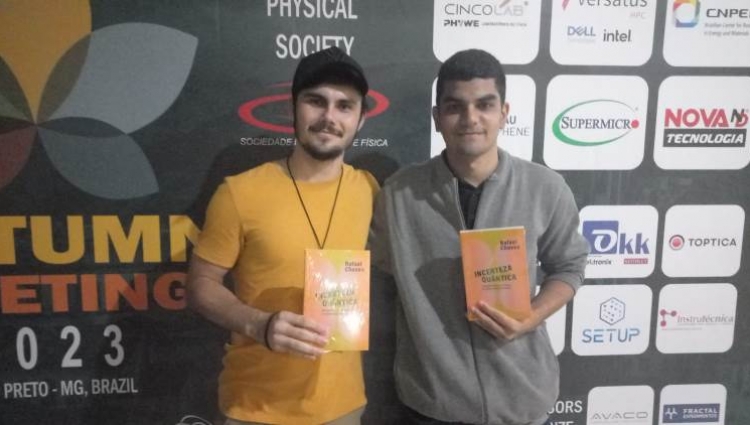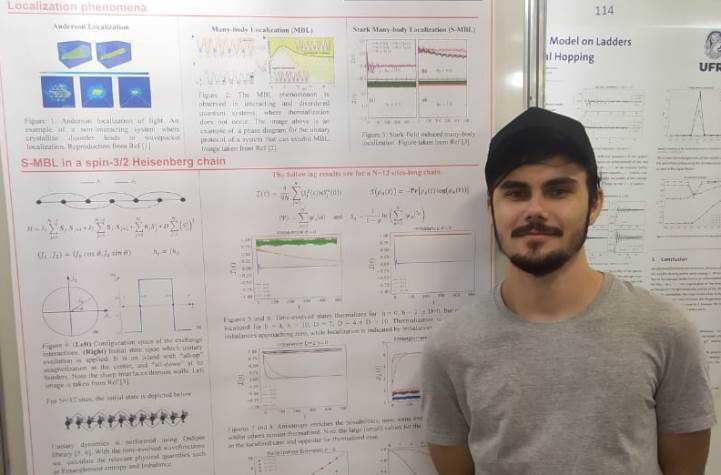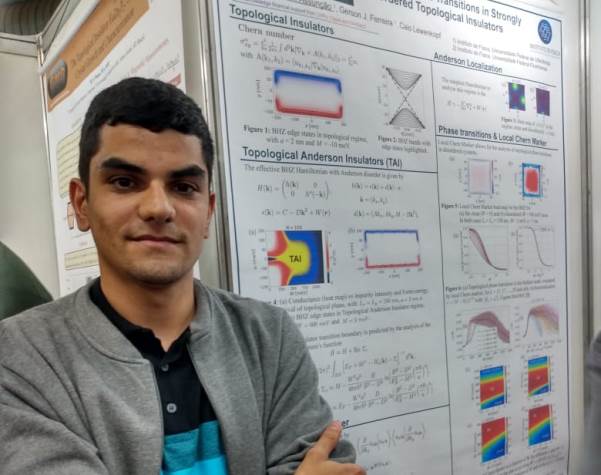Nossos alunos foram premiados na EOSBF/2023 em Ouro Preto
Publicado: 20/07/2023 - 14:17
Última modificação: 20/07/2023 - 14:27


Suppression of thermalization in spin-chains with single-ion anisotropy
In this work, we investigate SMBL in a spin 3/2 Heisenberg model in the presence of single-ion anisotropy. Our results reveal that the insertion of anisotropy greatly enriches the possibilities. By calculating the entanglement entropy, imbalance and other metrics that enable localization assessments, we observe that some initial states localize even in the absence of gradient potentials or any disorder whatsoever, depending on the value and sign of the anisotropy strength D. This new physics provides a rich phase diagram over the D-J1-J2 parameter space and suggests new ways to achieve localization.

Quantum Phase Transitions in Strongly Disordered Topological Insulators
Topological insulators (TIs) have attracted great attention of the condensed matter and material science communities due to their peculiar properties. TIs are usually characterized by being bulk insulators, while exhibiting robust edge/surface states. The existence of edge states in these materials is associated with topological phases, with the presence occurring for the non-trivial case and the absence for the trivial case.
Moreover, within the non-trivial helical edge states, backscattering is forbidden by time-reversal symmetry. Due to this important property, TIs have potential applications, which already justifies the large number of studies about the phases of these materials.
In our work, we discuss the quantum phase transitions in topological Anderson insulators. For these, transitions from trivial to topological insulator regime occur as a function of the intensity of the disorder, implying that a description using reciprocal space is not possible, since disorder breaks Bloch periodicity. Therefore we discuss their characterization using local markers, that allow obtaining universal curves for these transitions and with that possible universality classes.